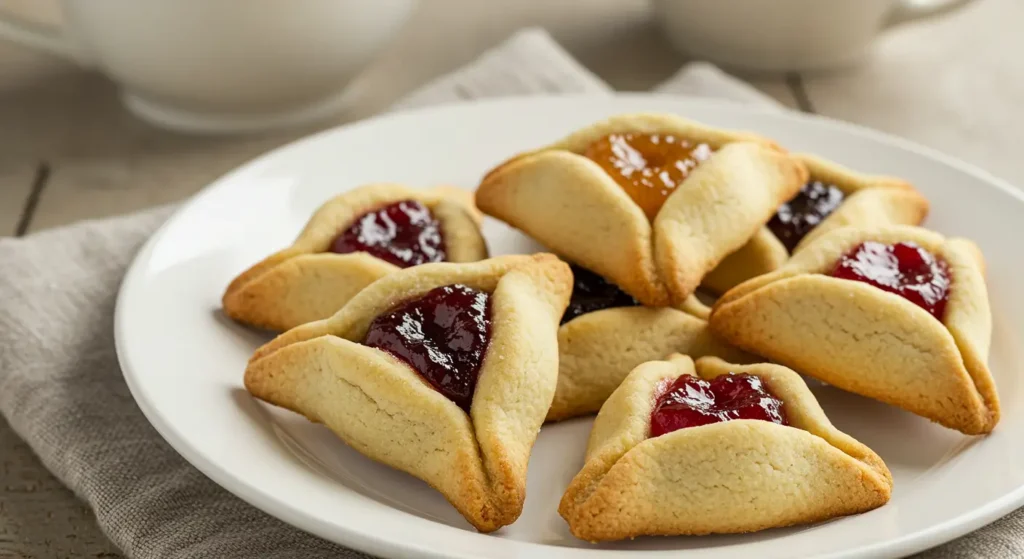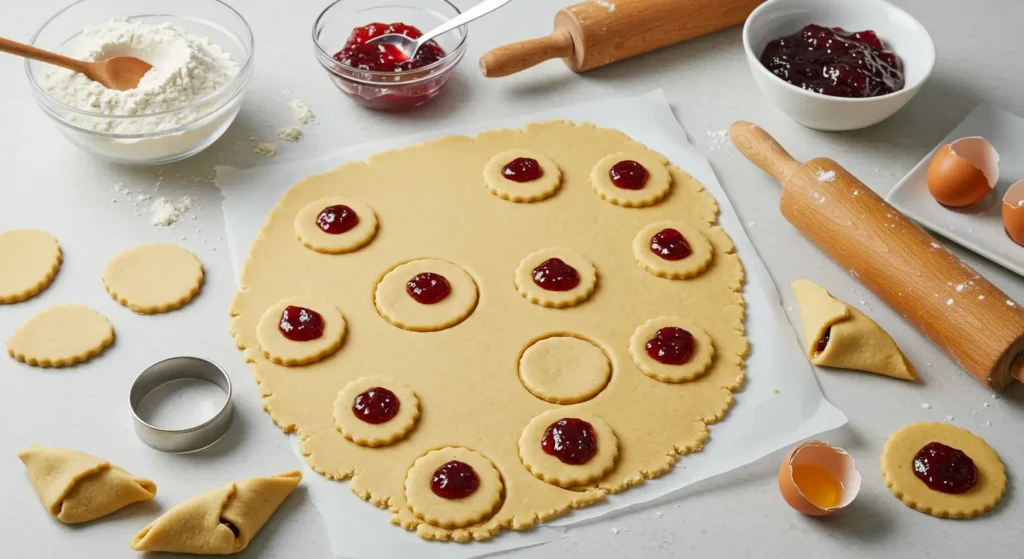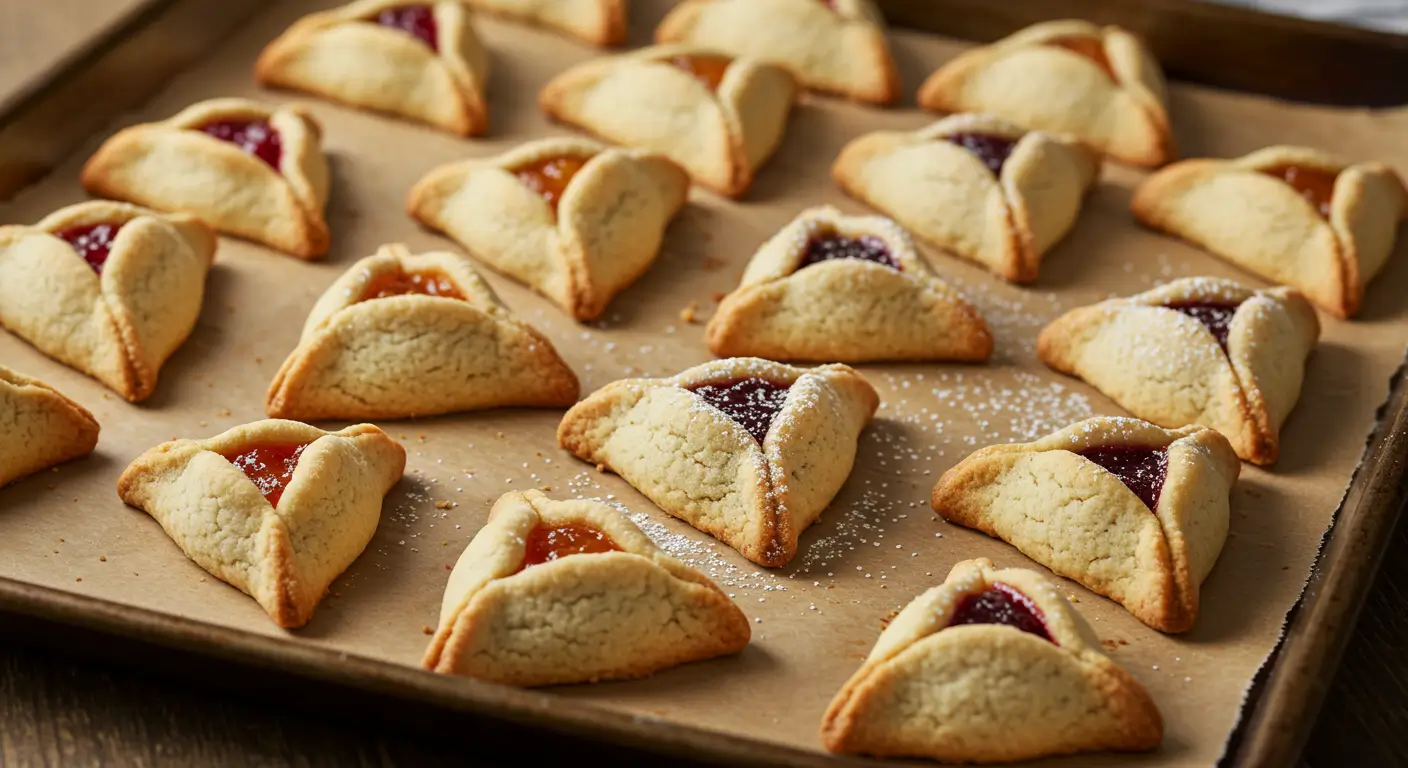Bake Easy Gluten-Free Hamantaschen for Purim
Table of Contents
Purim is a joyous Jewish holiday that celebrates the saving of the Jewish people from the evil plans of Haman. A traditional treat associated with this celebration is hamantaschen, a triangular cookie filled with jam, chocolate, or other sweet fillings. For those with dietary restrictions, enjoying these treats can be challenging.
You can now delight in baking gluten-free hamantaschen that everyone can enjoy. With the growing demand for gluten-free baking, it’s easier than ever to create delicious and inclusive treats for your Purim celebration.
Key Takeaways
- Learn how to make gluten-free hamantaschen for Purim.
- Discover the significance of hamantaschen during Purim.
- Explore gluten-free baking options for inclusive celebrations.
- Find tips for creating delicious gluten-free hamantaschen.
- Understand the importance of dietary inclusivity during holidays.
The Tradition of Hamantaschen for Purim
Purim is coming, and with it, the joy of baking Hamantaschen. These triangular cookies are filled with jam or other sweet treats. They are a big part of Jewish culture and a key part of Purim celebrations.
The Significance of Hamantaschen in Jewish Culture
Hamantaschen are more than just cookies. They tell the story of Esther, who saved the Jewish people from harm. The triangle shape reminds us of Haman’s hat or the three patriarchs: Abraham, Isaac, and Jacob. Making and sharing Hamantaschen connects us to our Jewish heritage.
Over time, different communities have made their own Hamantaschen recipes. But the core idea remains the same: to enjoy these tasty treats during Purim.
Why Gluten-Free Options Are Increasingly Important
More people are finding they can’t eat gluten. This means traditional Hamantaschen are off-limits for them. Gluten-free baking lets everyone join in the Purim fun, no matter their diet.
- Gluten-free flours offer a safe alternative for those with gluten issues.
- Gluten-free Hamantaschen make sure everyone can celebrate Purim together.
- These options don’t sacrifice taste or tradition.
Understanding Gluten-Free Baking Challenges
Gluten-free baking is a unique art, with hamantaschen being a tough pastry to master. Unlike traditional baking, gluten-free flours act differently. Knowing these differences is essential for making great gluten-free hamantaschen.
Common Issues with Gluten-Free Dough Texture
Achieving the perfect dough consistency can be tough when baking gluten-free. Gluten-free dough can be too crumbly or too dense. This makes it hard to roll out and shape into hamantaschen.
To solve this, using a mix of gluten-free flours is helpful. Adding xanthan gum or guar gum also improves the dough’s texture. It makes the dough more elastic and structured.
| Issue | Solution |
|---|---|
| Crumbly Dough | Add xanthan gum |
| Dense Dough | Use a mix of rice flour and potato starch |
Selecting the Right Flour Blend for Hamantaschen
Finding the right gluten-free flour blend is key for making great hamantaschen. A good blend includes rice flour, potato starch, and tapioca flour. Rice flour gives structure, while potato starch improves texture. Tapioca flour helps with browning and crispiness.
Try different ratios of these flours to find the perfect blend for your gluten-free hamantaschen.
- Rice flour for structure
- Potato starch for texture
- Tapioca flour for browning
Essential Ingredients for Gluten-Free Hamantaschen
For a great gluten-free hamantaschen recipe, picking the right ingredients is key. You must choose carefully to ensure your hamantaschen are not only gluten-free but also tasty and hold their shape well.
Flour Options and Substitutions
There are many gluten-free flours to choose from. Almond flour, coconut flour, and rice flour are favorites, each bringing its own special qualities. You might need to try different mixes to find the best one for your Hamantaschen recipe.
- Almond flour adds moisture and flavor.
- Since coconut flour absorbs a lot of moisture, only a small amount is needed.
- Rice flour provides a light texture.

Binding Agents and Other Key Components
To keep your gluten-free dough together, you’ll need good binding agents. Eggs are a top pick, but xanthan gum or guar gum can also work. Don’t forget sugar, salt, and cold butter for flavor and texture.
Traditional Filling Options
Classic hamantaschen fillings include poppy seed, prune, and apricot. These fillings are not just tasty but also carry deep meaning, tied to the Purim story. You can stick with these or try your own unique fillings.
Step-by-Step Guide to Making Gluten-Free Hamantaschen
Follow these simple steps to make delicious gluten-free hamantaschen for Purim. These traditional Jewish treats require a few key steps. First, prepare the dough, then bake the final product.
Preparing Your Dough
To start, mix your dry ingredients like gluten-free flour, sugar, and more. In another bowl, combine wet ingredients like eggs, oil, and vanilla. Slowly add the wet ingredients to the dry, mixing until a dough forms. Chill the dough for 30 minutes to let the ingredients blend well.
- Mix together the gluten-free flour, sugar, and any other dry ingredients.
- Mix wet ingredients: eggs, oil, and vanilla extract.
- Slowly mix the wet and dry ingredients until a dough forms.
- Chill the dough for at least 30 minutes.
Rolling and Cutting Techniques
Once the dough is chilled, roll it out using a surface dusted with flour. Roll it to about 1/4 inch thickness. Use a cookie cutter or glass to cut out circles. You’ll need to cut enough for triangle shapes.
Tips for Rolling and Cutting:
- Use a lightly floured surface to prevent sticking.
- Roll the dough to about 1/4 inch thickness.
- Cut out circles of dough using a cookie cutter or glass.
Filling and Shaping Your Hamantaschen
Place a spoonful of your chosen filling in each dough circle. Traditional fillings are poppy seed, prune, and apricot. Fold the dough into a triangle and press the edges to seal. Seal the edges well so the filling doesn’t leak out.
Popular Filling Options:
- Poppy seed
- Prune
- Apricot

Baking to Perfection
Preheat your oven to 375°F (190°C). Place the hamantaschen on a baking sheet lined with parchment paper. Leave about 1 inch of space between each cookie. Brush the tops with a beaten egg for a golden finish. Bake for 15-20 minutes, until lightly golden.
Baking Tips:
- Preheat oven to 375°F (190°C).
- Leave 1 inch of space between each hamantaschen.
- Brush tops with a beaten egg or egg wash.
Troubleshooting Your Gluten-Free Hamantaschen
Troubleshooting is key in gluten-free baking. We’re here to help you make gluten-free hamantaschen easily. With the right techniques, you’ll enjoy these Purim treats soon.
Preventing Dough from Cracking
Cracking is a common issue with gluten-free dough. To avoid it, make sure your dough is well-hydrated. If it’s too dry, add a bit of water or egg to bind it.
Also, roll out the dough gently. This helps avoid stressing it too much.
Ensuring Triangles Stay Closed While Baking
To keep triangles closed, press their edges firmly after filling. Applying an egg wash to the edges helps seal them together.
Adjusting for Different Gluten-Free Flours
Different gluten-free flour blends act differently. If your hamantaschen aren’t right, try changing the flour ratio. Adding xanthan gum can also improve texture.
| Issue | Solution |
|---|---|
| Dough Cracking | Add more hydration or be gentler when rolling out |
| Triangles Not Staying Closed | Press edges firmly, use egg wash |
| Poor Texture with Gluten-Free Flours | Adjust flour ratios, add xanthan gum |
Creative Variations and Fillings for Your Gluten-Free Hamantaschen
After making your gluten-free hamantaschen dough, it’s time to get creative. Choose your fillings and decorations to make your hamantaschen unique. This adds a personal touch, making them special for Purim.
Traditional Fillings: Poppy Seed, Prune, and Apricot
Classic hamantaschen fillings include poppy seed, prune, and apricot. These flavors are loved in Jewish bakeries and homes during Purim. Poppy seed fillings mix ground poppy seeds with sugar and sometimes lemon or orange zest. Prune fillings are sweet, jam-like, made by cooking prunes with sugar and water. Apricot fillings use apricot jam or cooked apricots with sugar.
- Use poppy seed to get a classic taste with a hint of nuttiness
- Prune for a sweet and fruity taste
- Apricot for a tangy and sweet experience
Modern and Innovative Filling Ideas
Want to try something new? Consider using chocolate chips, nutella, or fruit curds like lemon or raspberry. You can also use caramel, peanut butter, or marshmallow creme for a unique twist.
- Chocolate for a sweet treat
- Nutella for a hazelnut-chocolate experience
- Fruit curds for a tangy and fruity surprise

Decorating Your Hamantaschen
Decorating your hamantaschen is easy. Just dust them with powdered sugar or add sprinkles before baking. Use edible glitter or colored sugar for extra festivity.
Conclusion: Celebrating Purim with Your Homemade Treats
As you celebrate Purim, making homemade gluten-free hamantaschen is a joy. Sharing these treats with family and friends is truly special. The love and effort you put into them will be greatly appreciated.
Gluten-free hamantaschen are more than just a delicious dessert—they connect you to the rich traditions and joyful spirit of Purim. By making and sharing them, you help spread happiness and contribute to the festive atmosphere that makes the holiday so special.
So, go ahead and share your creations. Enjoy the delight on the faces of those who taste your gluten-free hamantaschen. Happy Purim!
FAQ
What is the best gluten-free flour blend for making hamantaschen?
A great blend includes rice flour, almond flour, and coconut flour. Try different ratios to find your favorite. Bob’s Red Mill Gluten-Free 1:1 Baking Flour is a good starting point.
How do I prevent my gluten-free hamantaschen dough from cracking?
Keep your dough cold and handle it gently. Avoid overworking it. Adding a bit more liquid or egg can help with flexibility.
Can I use traditional hamantaschen fillings for my gluten-free version?
Yes, traditional fillings like poppy seed, prune, and apricot jam work well. Just check the ingredients of store-bought jams for gluten.
How do I ensure my gluten-free hamantaschen triangles stay closed while baking?
Press the edges together firmly after filling. Make sure they are sealed well. Brushing the edges with egg wash can also help.
Can I decorate my gluten-free hamantaschen?
Yes, you can decorate with powdered sugar, sprinkles, or other toppings. Just make sure your toppings are gluten-free.
Are there any modern filling ideas I can try for my gluten-free hamantaschen?
Try fillings like Nutella, peanut butter, or fruit curds. Use high-quality, gluten-free chocolate or nut butters for the best taste.
How do I adjust my gluten-free hamantaschen recipe for different gluten-free flours?
Adjusting ratios and adding xanthan gum may be needed with different flours. Start with a trusted recipe and then tweak it based on your flours.

